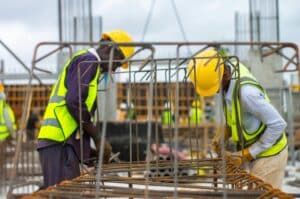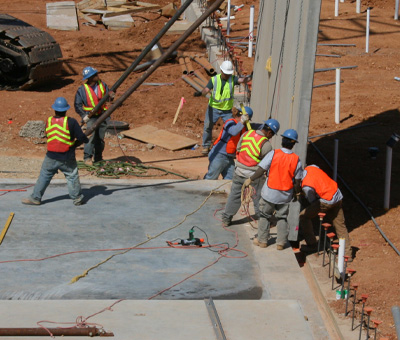Ladder safety is a pivotal concern in the construction industry, where the use of ladders is both ubiquitous and necessary for a myriad of tasks. The inherent risks associated with ladder use—ranging from minor injuries to fatal accidents—underscore the importance of adhering to stringent safety protocols. This blog post delves into the critical aspects of ladder safety and outlines effective strategies to minimize risks, ensuring a safer work environment for all.
The Importance of Ladder Safety
Ladder incidents rank among the top causes of workplace injuries within construction sites. With workers frequently required to navigate ladders for various tasks, the potential for falls and related accidents is high. This risk is compounded by the presence of high heights, heavy equipment, and other hazardous conditions typical of construction sites. Recognizing and implementing ladder safety measures is thus an essential component of any comprehensive safety program.
Choosing the Right Ladder
Selecting the appropriate ladder is the first step in preventing accidents. The ladder’s length and weight capacity must match the task at hand and the user’s requirements. A mismatch can lead to instability and increase the risk of falls.
Conducting Pre-Use Inspections
Before use, a thorough inspection of the ladder is necessary to identify any defects such as cracks, loose rungs, or missing components. Damaged ladders should be reported and not used under any circumstances to prevent accidents.
Ensuring Stable Placement
The ladder must be placed on a stable and level surface to avoid tipping or sliding. Adjustments may be needed for uneven terrain, and ladders should never be positioned in areas where they can be easily disturbed.
Securing the Ladder
Both the top and bottom of the ladder should be secured to prevent movement. Utilizing stabilizers or tie-off straps can offer additional safety, ensuring the ladder remains firmly in place during use.
Maintaining Three Points of Contact
A key safety protocol is maintaining three points of contact with the ladder at all times. This could mean two hands and one foot, or vice versa. Tools and materials should be transported using belts or hoists rather than carried by hand.
Adhering to Weight Limits
Ladders are designed with specific weight limits that should never be exceeded. Overloading a ladder with equipment or tools can lead to instability and potential collapse.
Setting the Correct Angle
For extension ladders, the optimal angle for stability is 75 degrees. The ladder should also extend at least three feet beyond the landing surface to ensure adequate support.
Avoiding Overreaching
Overreaching can lead to loss of balance and falls. Workers should keep their belt buckle within the ladder’s side rails to maintain stability.
Considering Weather Conditions
Weather conditions such as wind or rain can adversely affect ladder stability. It’s advisable to avoid ladder use in inclement weather until conditions improve.
Training and Education
Providing comprehensive ladder safety training and education is crucial. All employees should be familiar with safe ladder use practices to minimize risks.
By prioritizing ladder safety and adhering to established protocols, construction sites can significantly reduce the risk of ladder-related incidents. This commitment to safety not only protects workers but also promotes a culture of awareness and prevention, contributing to a safer and more productive work environment.
Building Safety from the Start with Prevention Through Design
In workplace safety, the best results come from stopping hazards before they ever reach employees. While training, procedures, and personal protective equipment (PPE) are important, the most effective approach is to design hazards out of the workplace from the beginning. This approach is known as Prevention through Design (PtD). What is Prevention through Design? Prevention…
Continue Reading Building Safety from the Start with Prevention Through Design
Emergency Preparedness: Staying Ready
Whether a misstep causes a fall or a natural disaster causes an evacuation, emergencies happen. Emergency preparedness and response can mean the difference in avoiding an injury or ending with a fatality. Emergencies come with little to no warning. While we may think these are extreme situations that will “never” happen to us, the reality…
Continuous Improvement and Immersive Training in Action
Construction is a dangerous business. Risks are constant, standards shift, and complacency can be deadly. For Jennifer Lastra, a U.S. Navy veteran and current CEO of 360 Immersive, corporate-style training falls far short. True safety begins with continuous improvement, supported by real engagement on the job. Training Should Go Beyond a Click-Through Box “Corporate training…
Continue Reading Continuous Improvement and Immersive Training in Action











